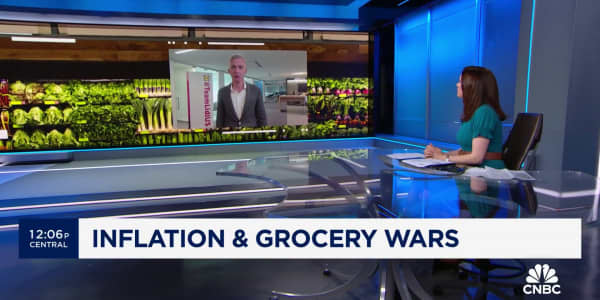
The U.S. stock market is about to undergo a "regime change" that will cause a fundamental reordering of which stocks will perform best, according to Bank of America Merrill Lynch strategists.
As Federal Reserve monetary stimulus winds down, investors have been looking to place their bets as to what sectors and areas of the market will perform best.
Many have been focusing on non-U.S. equities, fixed income and funds that provide cushions against volatility in the currency market.
BofA, though, suggests a different approach: focusing on "cash-rich, self-funded companies" that are generally considered of superior quality than the high-debt cyclical stocks that have benefited greatly during the post-crisis bull stampede that has seen the surge more than 210 percent since March 2009.
In other words, investors should buy "high" quality and sell "low," a twist on the proverbial goal of buying low and selling high in price terms. The move, according to the strategists, is "the single most important trade for the next regime." (Tweet This)
"The U.S. is in the process of a regime change, and we think high quality stocks will be the biggest beneficiaries for the same reason that low quality won in the last regime: liquidity," Savita Subramanian, BofAML equity and quant strategist, and others said in a report for clients. "Valuations of risky stocks have been buoyed by 15 years of fiscal and monetary stimulus."
Indeed, the Fed has grown its balance sheet by nearly $4 trillion during three rounds of quantitative easing, or the monthly asset purchases of Treasurys and other securities. The central bank simultaneously has kept its target funds rate, which sets the benchmark for most other interest rates, anchored near zero since late 2008.
However, the Fed ended QE in October and is expected to embark on a rate-hiking cycle later this year.
Read MoreThis is why the Fed might not raise rates in 2015
"We see signs of QE fatigue," Subramanian wrote. "Since 2010, each subsequent policy response has seen diminishing returns in risky stocks, so global easing may not be enough. In the U.S., the Fed is expected to tighten this year, and fiscal stimulus has been replaced by a culture of fiscal austerity."
Characteristics that high-quality stocks will show include earnings stability as corporate profit growth slows or stops, better performance during times of high volatility, and a higher degree of ownership by active fund managers as they reposition away from risky companies.
As a benchmark, Subramanian suggests following S&P Common Stock ratings.
The S&P 500 High Quality Ratings Index has gained nearly 14 percent over the past year, outperforming the S&P 500 broader large-cap index, which is up 11.7 percent during the same period. The high-quality index is up 1.3 percent year to date, compared with the S&P's gain of 1.1 percent.
Read MoreMarket volatility? Get used to it, says strategist
On a sector basis, the biggest percentage point difference between higher- and lower-quality stocks is in consumer discretionary, which makes up just 5 percent of low-quality but 19 percent of high. For consumer staples, the respective numbers are 1 percent and 9 percent, while financials shrink from 29 percent to 19 percent, according to BofAML calculations.
An exchange-traded fund that closely mirrors the index, the PowerShares S&P 500 High Quality ETF, is up 12.7 percent for the 12-month period and 0.53 percent year to date. The fund's top holdings are industrials and consumer cyclicals and noncyclicals. Top company holdings include UnitedHealth, Disney and Ecolab.
"Not only does the secular backdrop favor quality, but the cyclical drivers are also in place: high quality stocks have historically outperformed during periods of slowing profits growth and heightened volatility and 2015 could offer a little of each," Subramanian said.






